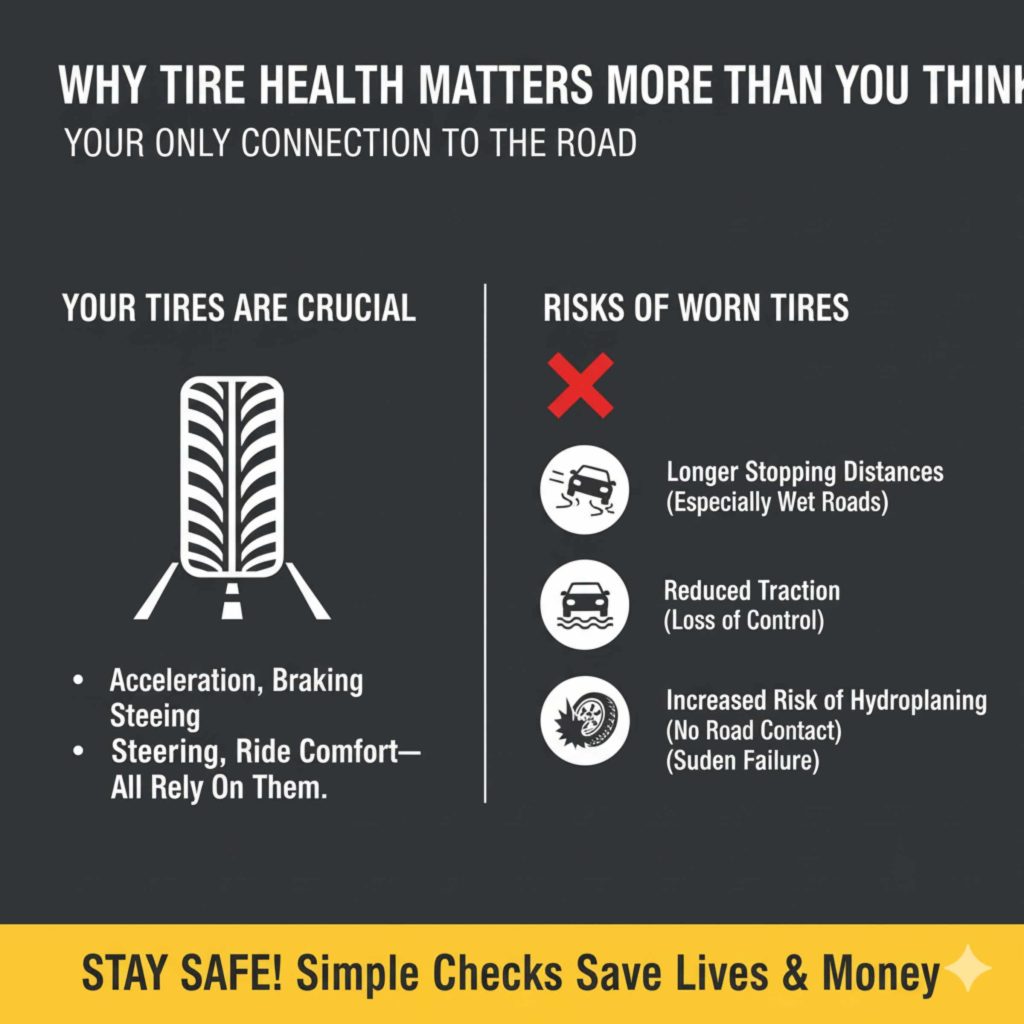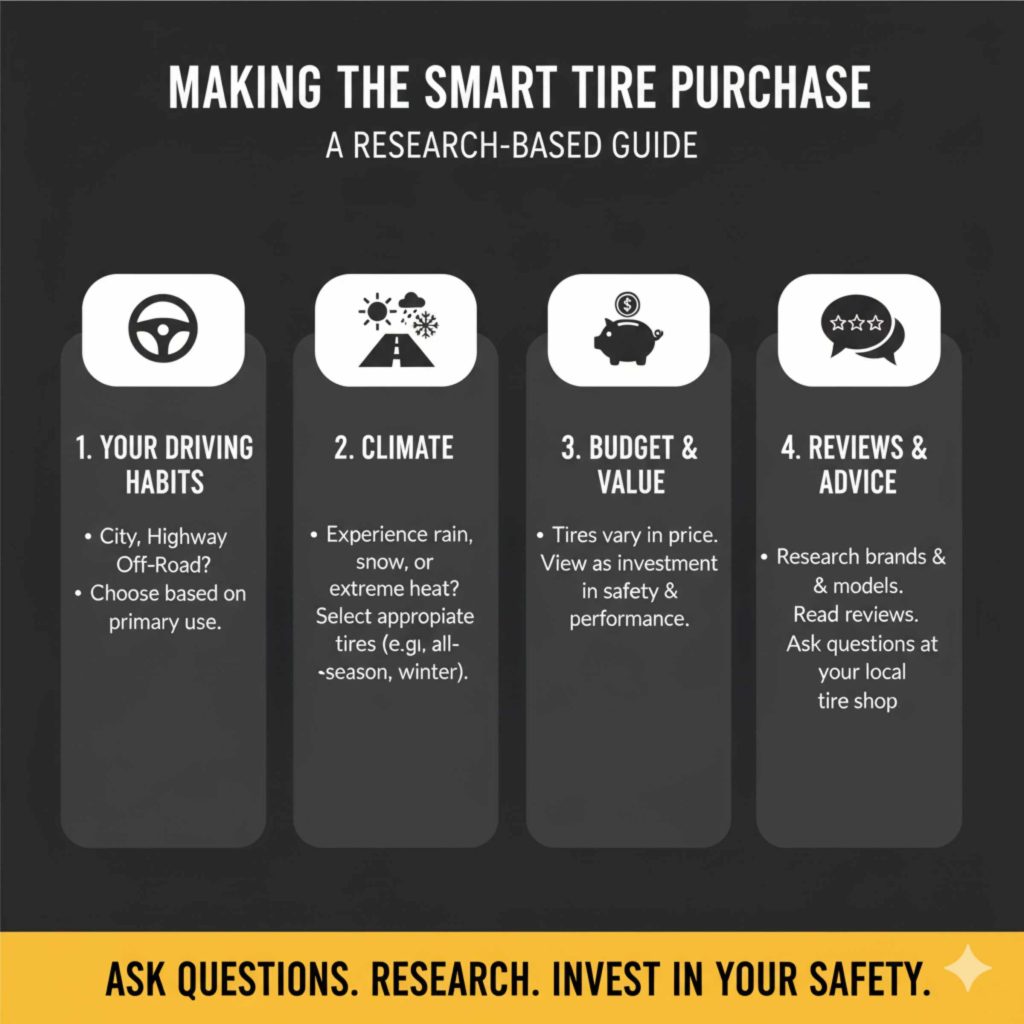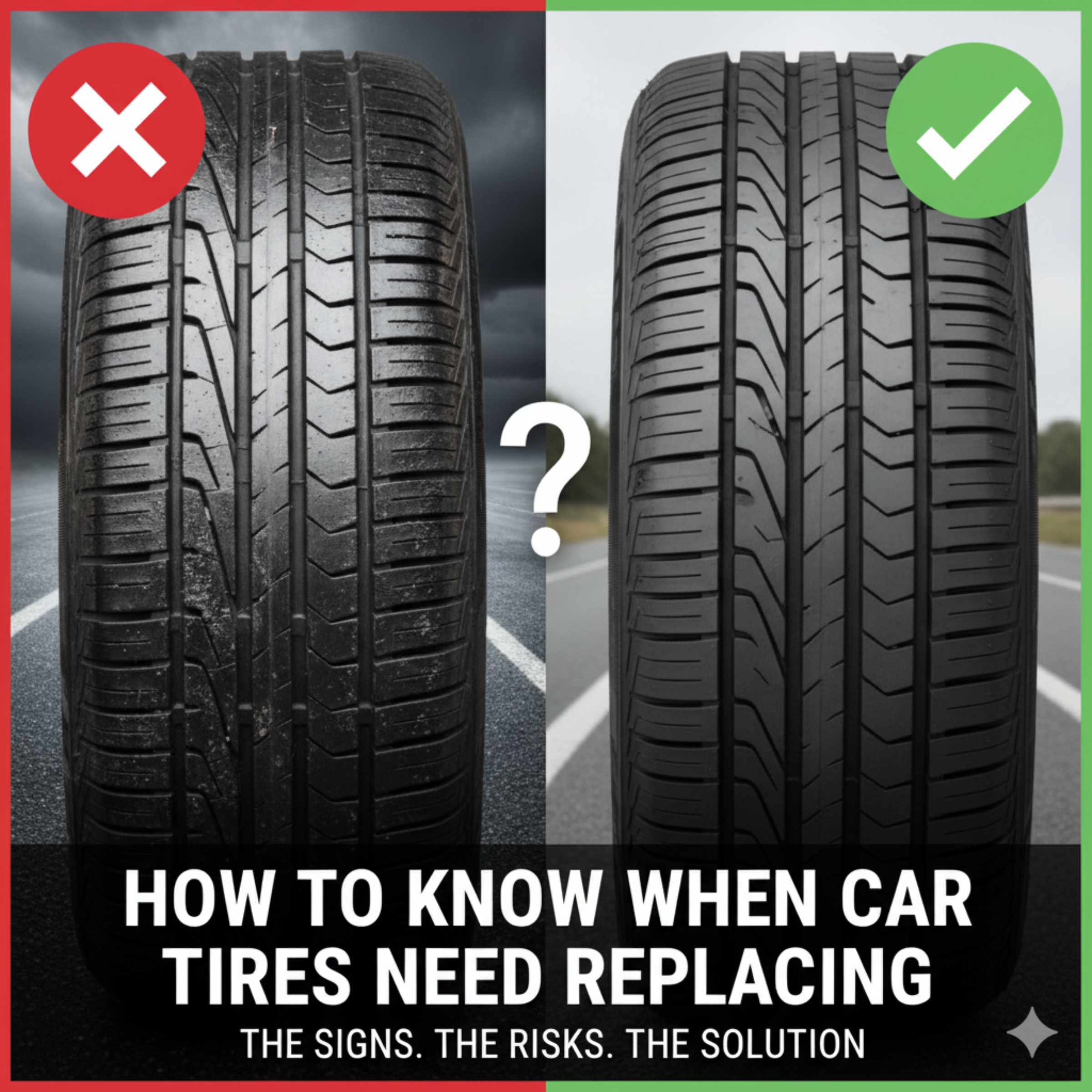Quick Summary:
You know your car tires need replacing when the tread is worn too low (below 2/32 inch), you see cracks or bulges, or they’re older than 6-10 years. Regularly checking these signs keeps you safe and your car running smoothly.
Is your car acting a little… bumpy? Or maybe you’re just not feeling as confident on the road as you used to? A lot of the time, the humble tire is the culprit! It’s super common to wonder, “How do I know when car tires need to be replaced?” It can feel a little mysterious, but don’t worry, it’s actually quite straightforward. We’re going to break down exactly what to look for, using simple steps anyone can follow. By the end of this, you’ll be a tire inspection pro! Let’s make sure you’re always driving safely and smartly.
Why Tire Health Matters More Than You Think
Your tires are the only part of your car that connects directly to the road. Think about that for a second! Everything—your acceleration, your braking, your steering, and how smoothly you ride—relies on them. When your tires are worn out or damaged, it’s not just an inconvenience; it’s a major safety risk.
Worn tires can lead to:
- Longer stopping distances: This is crucial on wet roads.
- Reduced traction: Making it harder to steer and control your car, especially in bad weather.
- Increased risk of hydroplaning: Where your tires lose contact with the road surface due to water.
- Potential for blowouts: Damaged tires are more likely to fail unexpectedly.
The good news is that knowing when to replace them isn’t rocket science. With a few simple checks, you can easily spot the signs and keep yourself and your passengers safe.

The Top Signs Your Car Tires Need Replacing
Let’s get down to the nitty-gritty. Here are the key indicators that it’s time to start shopping for new tires.
1. Tread Depth: The Wear Indicator Guide
This is the most common and important way to tell if your tires are worn out. Tread is the pattern on the tire’s surface that grips the road. As you drive, this tread wears down.
How to Check Tread Depth
It’s surprisingly easy! You have a few options:
- The Penny Test: This is a classic and super simple method.
- Grab a penny.
- Insert the penny head-first into the deepest part of a tire tread groove.
- If you can see all of Lincoln’s head, your tread is likely below the safe level (which is 2/32 of an inch).
- The Quarter Test: Similar to the penny test, but gives you a bit more margin for error if you’re unsure.
- Grab a quarter.
- Insert it head-first into a tread groove.
- If you can see all of Washington’s head, your tread is definitely getting low and you should consider replacing your tires soon. (This indicates around 4/32 inch of tread, which is still considered safe for a bit longer, but it’s good to keep an eye on).
- Tread Wear Indicators (TWIs): Most modern tires have small, raised bars built into the grooves.
- When the tread wears down to the level of these bars, the tire is considered worn out and needs replacing.
- You’ll see these as small rectangular or bridge-like sections within the main tread grooves.
- Tire Tread Depth Gauge: For a more precise measurement, you can buy an inexpensive tire tread depth gauge from an auto parts store.
- Simply insert the probe into the groove and read the measurement.
The legal minimum tread depth in many places is 2/32 of an inch. However, safety experts often recommend replacing tires when they reach 4/32 of an inch, especially if you live in an area with frequent rain or snow, as shallower treads perform much worse in wet conditions.
2. Visible Damage: Cracks, Bulges, and Cuts
Your tires can suffer from more than just wear. Inspect the sidewalls and the tread surface for any signs of damage.
What to Look For:
- Cracks: Small cracks in the rubber, especially on the sidewall, can indicate the rubber is aging and becoming brittle. These can worsen over time and lead to leaks or blowouts.
- Bulges or Blisters: If you notice any areas that look swollen or puffed out on the tire’s sidewall, this is a serious red flag. It means the internal structure of the tire has been compromised, and it could fail catastrophically at any moment. Do not drive on a tire with bulges!
- Cuts or Punctures: While small punctures can sometimes be repaired, deep cuts or tears in the sidewall mean the tire needs to be replaced. Even if a puncture is in the tread, if it’s large or in an irreparable spot (like too close to the sidewall), replacement is necessary.
Take a walk around your car and look closely at all four tires. Pay attention to the sides as well as the part touching the ground. It helps to do this when the tires are clean so you can see any flaws clearly.
3. Age of Your Tires: Time Takes Its Toll
Even if your tires look okay and have plenty of tread left, time can weaken them. Rubber degrades over time, becoming brittle, dry, and more prone to failure.
How to Determine Tire Age:
Your tires have a hidden code that tells you exactly when they were manufactured. It’s called the DOT code, and it’s found on the sidewall.
- Look for a series of letters and numbers that start with “DOT.”
- The last four digits are the most important for determining age.
- The first two digits represent the week of the year, and the last two digits represent the year of manufacture.
- For example, if the code ends with “2219,” the tire was made in the 22nd week of 2019.
General Guidelines for Tire Age:
- Most manufacturers and safety organizations recommend replacing tires that are 6 years old or older, regardless of tread depth.
- Even if they appear to be in good condition, the rubber compounds degrade.
- If your tires are 10 years old or older, they should be replaced, period.
A great resource for understanding tire age and safety can be found on the National Highway Traffic Safety Administration (NHTSA) website.
4. Uneven Tire Wear Patterns
Tires don’t always wear down evenly. The pattern of wear can tell you a lot about your car’s alignment, suspension, and tire pressure.
Common Uneven Wear Patterns and What They Mean:
| Wear Pattern | Likely Cause | What to Do |
|---|---|---|
| Center Wear: Tread is worn more in the middle of the tire. | Over-inflation. | Check tire pressure and adjust to the manufacturer’s recommendation (found on the sticker in your driver’s side doorjamb). |
| Edge Wear (One Side): Tread wears down significantly on one edge. | Improper alignment or worn suspension components (like ball joints). | Get your alignment checked by a professional. |
| Edge Wear (Both Sides): Tread wears down on both outer edges. | Under-inflation. | Check tire pressure and inflate to the correct PSI. |
| Cupping or Scalloping: Patches of wear that are irregular or look like scoops. | Worn suspension components (shocks, struts) or unbalanced tires. | Have your suspension checked and tires balanced. |
| Feathering: Tread elements are worn smooth on one edge and sharp/jagged on the other. | Alignment issues. | Get your alignment checked. |
Fixing the underlying issue causing uneven wear is crucial. If you just replace the tires without addressing the problem, your new tires will start to wear unevenly and quickly!
5. Vibration or Noise
Are you feeling unusual vibrations through the steering wheel or the seat of your pants? Or have you noticed new, annoying noises coming from your tires?
- Vibrations: These can be a sign that your tires are out of balance, or that the internal structure of the tire is damaged, which can be dangerous.
- Noise: While some tire noise is normal, a new or changing hum, thumping, or squealing could indicate internal damage, uneven wear, or that the tire is simply very worn out and the tread blocks are hitting the road in an unusual way.
If you experience new vibrations or noises, it’s best to have your tires and vehicle thoroughly inspected by a professional. Don’t ignore these signs!
When is it Time to Replace All Four Tires?
It’s generally recommended to replace all four tires at the same time. Here’s why:
- Consistent Handling: All four tires will have the same tread depth and performance characteristics, providing predictable handling and braking.
- Safety: Mixing tires with significantly different tread depths, especially on the drive axle, can compromise your car’s stability and braking.
- Traction: Having four matching tires ensures optimal traction across all wheels.
In some cases, if you only drive very short distances or have very low mileage, you might replace tires in pairs (usually the front or rear pair together). However, for most drivers, replacing all four is the safest and most effective approach. Check your vehicle owner’s manual for specific recommendations regarding tire replacement for your car model.
What About Your Spare Tire?
Don’t forget about your spare! Even if it’s rarely used, it can also degrade over time.
- Check its age: Most spares have DOT codes too.
- Check its condition: Look for cracks or signs of damage.
- Check its pressure: Spares often need higher pressure than regular tires.
It’s a good idea to have your spare inspected periodically, especially if it’s more than a few years old. A flat spare is no good to anyone!
Making the Smart Tire Purchase
Once you know it’s time to replace your tires, a little research goes a long way. Consider:
- Your Driving Habits: Do you drive mostly in the city, on highways, or off-road?
- Climate: Do you experience rain, snow, or extreme heat?
- Budget: Tires range in price, but remember that good tires are an investment in your safety.
- Reviews: Look for reviews from other drivers and reputable automotive publications.
Don’t be afraid to ask questions at your local tire shop. They can help you find the best tires for your vehicle and your needs.

Frequently Asked Questions About Tire Replacement
Q1: How often should I check my tire pressure?
You should check your tire pressure at least once a month and before any long trips. It’s also a good idea to check it when the temperature changes significantly, as temperature affects air pressure.
Q2: Can I just replace one tire if it’s worn out?
It’s generally not recommended to replace just one tire if the others are in good condition. For optimal safety and vehicle handling, it’s best to replace tires in pairs (front or rear) or, ideally, all four at once. Mixing tires can lead to unpredictable performance.
Q3: What does “all-season” tire mean?
All-season tires are designed to provide adequate performance in a variety of conditions, including moderate wet, dry, and even light snow. They are a good compromise for drivers who don’t need specialized winter or summer tires, but they may not perform as well as dedicated winter tires in severe snow or ice.
Q4: How do I know if my tires are unbalanced?
You might feel vibrations in the steering wheel or seat, especially at higher speeds. You might also notice a “shimmy” in the front end. Tire balancing ensures that the weight of the tire and wheel assembly is evenly distributed.
Q5: Are cheaper tires just as good as expensive ones?
Not always. While there are great value tires, very cheap options may compromise on durability, grip, ride comfort, or longevity. Invest in reputable brands and models that are suited to your driving needs and climate for the best performance and safety.
Q6: How can I make my tires last longer?
You can extend tire life by:
- Maintaining proper inflation pressure.
- Rotating your tires regularly (typically every 5,000 to 7,500 miles).
- Getting regular wheel alignments.
- Driving gently (avoiding hard acceleration, braking, and cornering).
- Keeping tires balanced.
Conclusion: Stay Safe, Stay Informed!
Knowing when your car tires need replacing is more about simple observation than complex mechanics. By keeping an eye on tread depth, looking for visible damage, checking their age, and noting any unusual wear patterns, vibrations, or noises, you’re ensuring your safety and the health of your vehicle.
Don’t wait until your tires are completely bald or show obvious signs of distress. A proactive approach gives you peace of mind and ensures your car grips the road confidently, no matter where your journey takes you. So, take a few minutes, walk around your car, and give those tires a quick check. You’ve got this!

